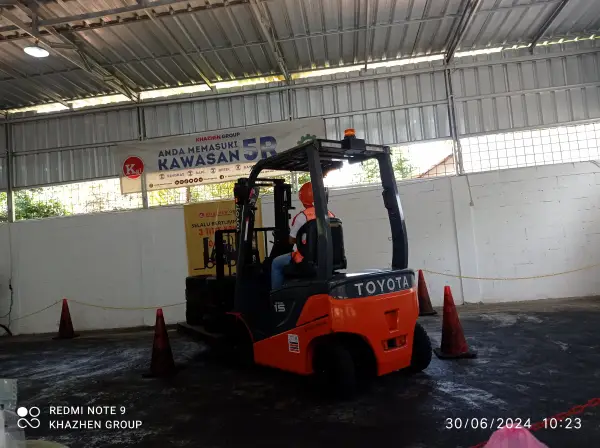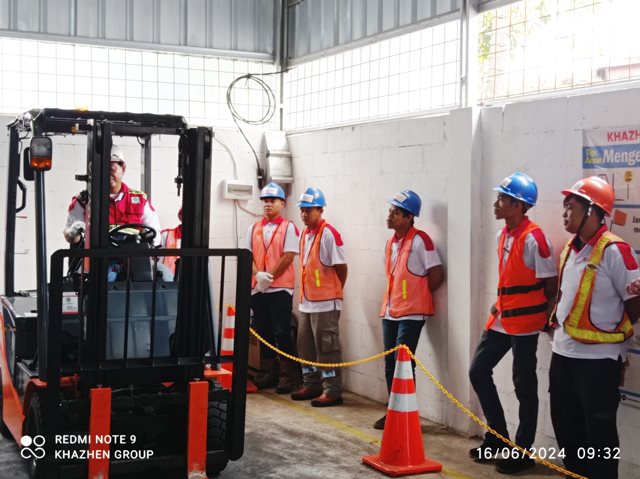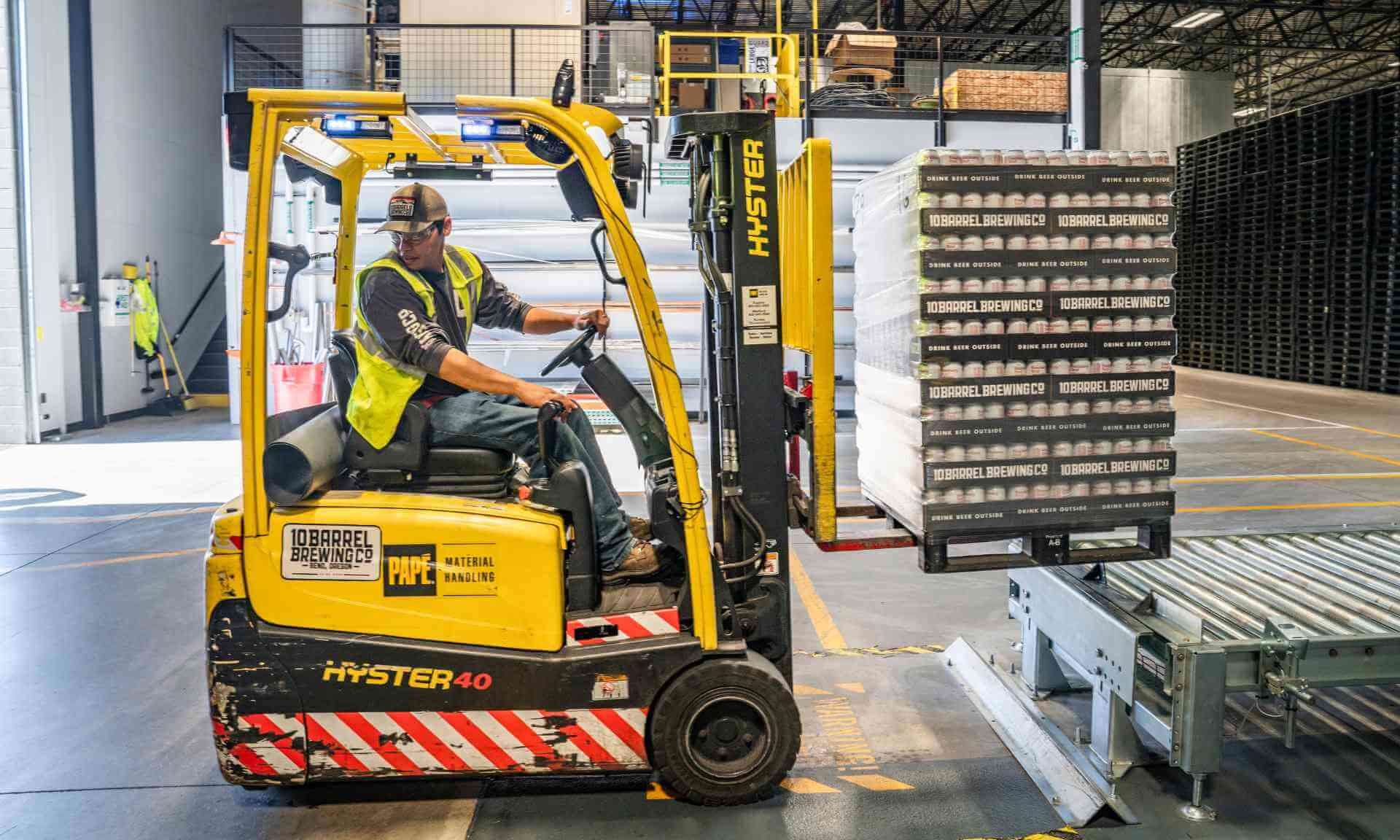Forklifts play a crucial role in large-scale operations, facilitating tasks for manufacturers and workers worldwide. However, improper use of forklifts can pose serious dangers to operators and those nearby. This Article will talk about Common Forklift Accidents.
The statistics on forklift-related injuries and fatalities are alarming. According to the Occupational Safety and Health Administration (OSHA), approximately 35,000 serious injuries and 62,000 minor injuries related to forklifts occur annually.
In this article, we will discuss forklift accident statistics, common types of forklift accidents, the risks of improper forklift use, and important safety tips for operating forklifts.
Forklift Accident Statistics
According to OSHA, about 1.5 million workers operate over 855,900 powered industrial trucks, including forklifts.
Forklifts are involved in around 25% of construction accidents, resulting in about 35,000 serious injuries and 62,000 minor injuries each year.
While fatalities from forklift accidents are less common than nonfatal injuries, they still occur.
Here are some statistics from the National Safety Council regarding forklift-related fatalities:
- In 2020, there were 44 deaths caused by forklift transportation incidents.
- Non-roadway incidents involving motor vehicles led to 22 deaths.
- Non-roadway, non-collision incidents resulted in 15 deaths.
- Non-roadway forklift accidents involving rollovers or overturns caused 10 deaths.
The National Safety Council has detailed nonfatal forklift injuries by industry from 2020 data.
Industries with the highest number of nonfatal forklift injuries include services, trade, transportation, utilities, and goods-producing industries.
Common Types of Forklift Accidents and Prevention Methods
Forklift accidents are unfortunately common and can include scenarios such as being struck by a forklift, injuries from forklift overturns, falls from forklifts, being hit by falling loads, improper use due to lack of training, collisions from obstructed views, and mechanical failures.
To significantly reduce these accidents—by up to 70%—it’s essential to take several precautionary measures.
This includes using seat belts, ensuring proper and continuous training for forklift operators, and adhering to specific workplace safety guidelines.
1. Struck by a Forklift
Accidents involving pedestrians or co-workers are common. These incidents often occur when forklift operators are distracted and not paying attention to their surroundings. Unsafe working conditions, such as inadequate space or time for operators to react and lack of warning signs, can also contribute to these accidents.
Prevention:
- Ensure operators take regular breaks during work hours.
- Use floor tape to mark areas where forklifts operate.
- Install barriers around forklift work zones to prevent unauthorized entry.
2. Injuries from Forklift Overturns or Rollovers
Forklifts are heavy machines not designed for quick turns. If operators turn too quickly or exceed load capacity, the forklift can overturn, posing serious hazards. Proper use is crucial to prevent rollovers. Operators should balance loads evenly, avoid quick turns, and be cautious on uneven surfaces.
Prevention:
- Maintain safe speed limits.
- Slow down near corners.
- Do not exceed forklift weight capacity.
- Keep loads low to the ground.
3. Falls from Forks or Platforms
Falls from forklifts are common but entirely preventable. Operators should always exercise caution, use guardrails, and follow proper safety steps to avoid falls.
Prevention:
- Avoid using forklifts as manlifts; use the appropriate machinery like scissor lifts or order pickers.
- Do not rush; haste can lead to accidents.
- Use guardrails to significantly reduce fall risks.
4. Falling Loads from Forklifts
Falling loads can cause serious accidents, including fatalities. Key points to ensure safe forklift operation include:
Prevention:
- Ensure loads are centered and securely fastened on the forklift forks.
- Avoid moving too quickly, especially when lifting or transporting heavy loads.
- Regularly inspect and avoid using damaged forks.
5. Lack of Training
Proper forklift training is essential before operating heavy machinery. An operator should understand the basics of safe operation and be aware of components that could cause injuries. Accidents due to lack of training can be significantly reduced through comprehensive training programs. OSHA requires certification for operating forklifts.
Prevention:
- Enroll in approved certification courses.
- Review manuals before using new machines.
6. Obstructed Vision
Maintaining a clear view of the direction you are driving and being aware of common forklift safety hazards is critical for safe forklift operation. Many accidents occur due to obstacles blocking the driver’s view, making it difficult to see the path or intersections ahead.
Prevention:
- Ensure loads do not obstruct your view.
- Turn slowly and maintain safe distances.
- Use a spotter to help navigate around blind spots.
7. Mechanical Failures
Even with maximum care and adherence to safety procedures, accidents can still happen. This is because the operator is only part of the equation; the forklift must also be in optimal condition and well-maintained. Mechanical failures and breakdowns are major causes of forklift accidents and personal injuries.
Issues such as leaking valves and hoses, worn-out brakes, or damaged tires can lead to accidents.
Prevention:
- Conduct pre-shift inspections.
- Perform regular equipment maintenance.
- Do not operate damaged equipment.
Forklifts are invaluable machines but must be operated with the same care as any other construction equipment.
Ignoring forklift safety guidelines can lead to injuries for operators and nearby workers.
It is crucial to ensure that anyone operating a forklift at your worksite has received proper training and certification.




